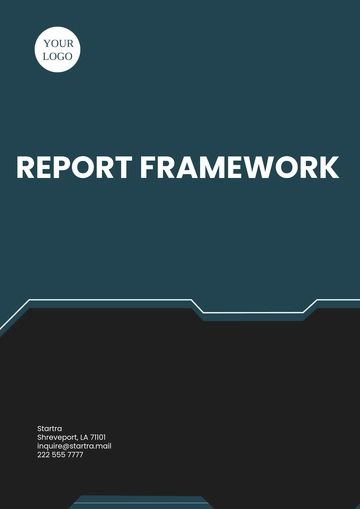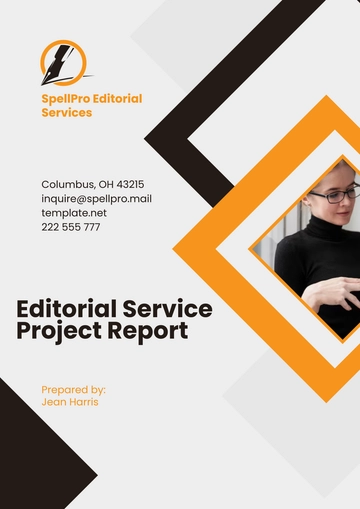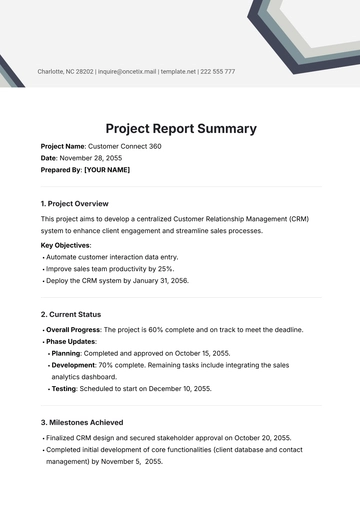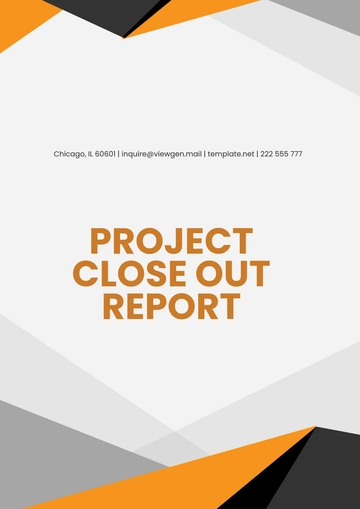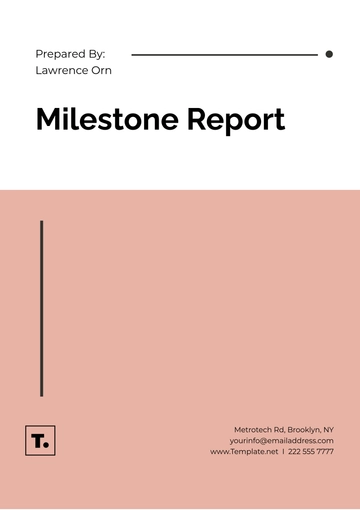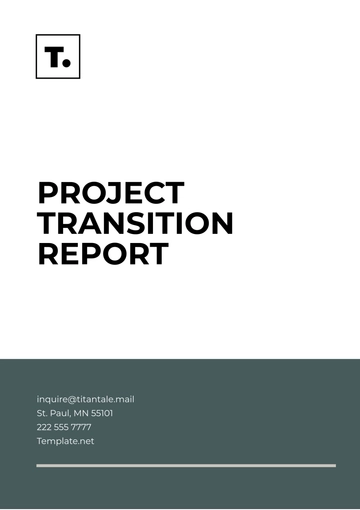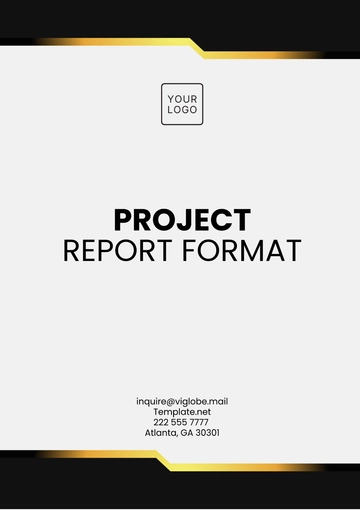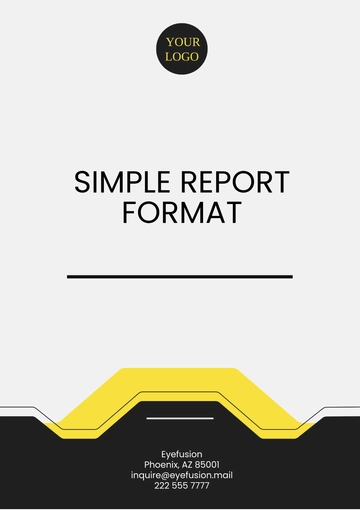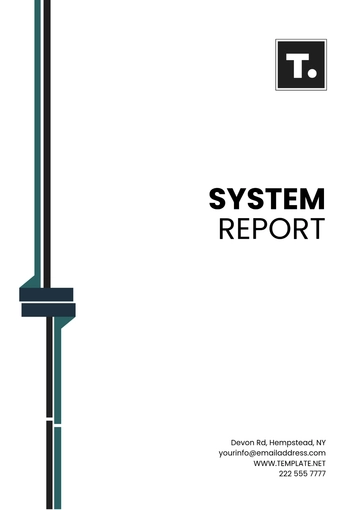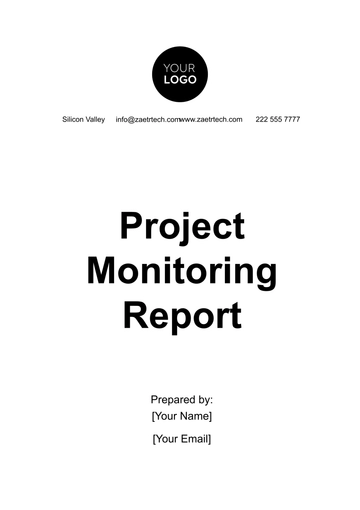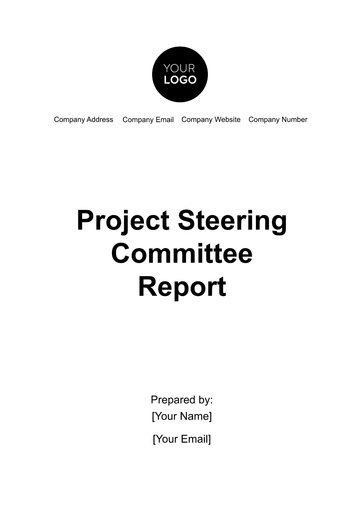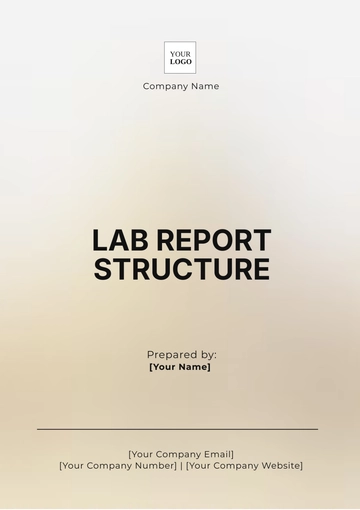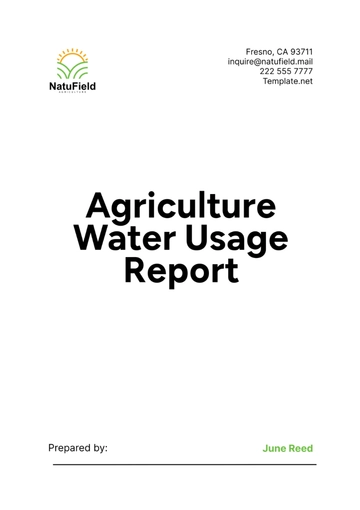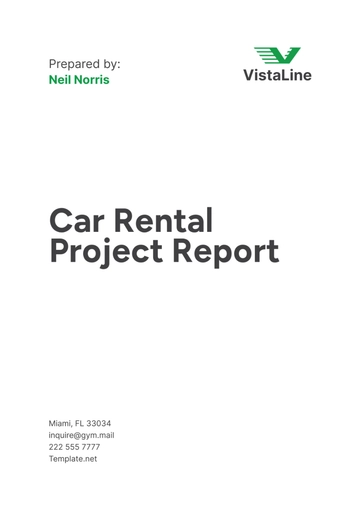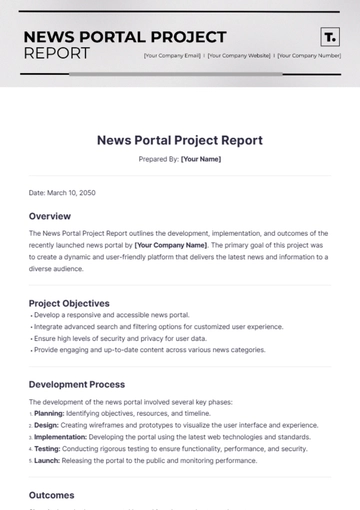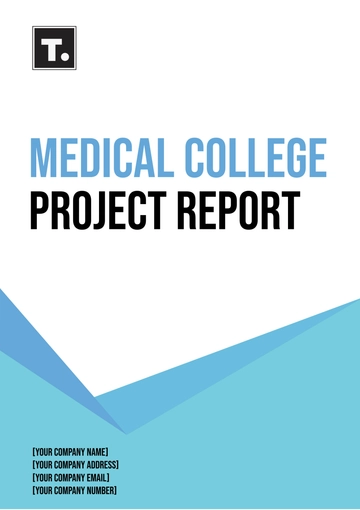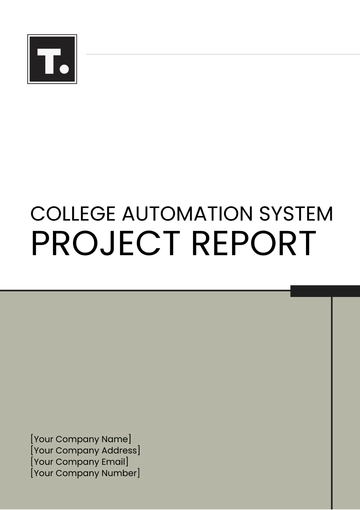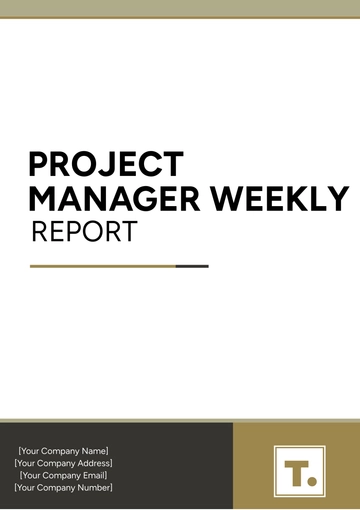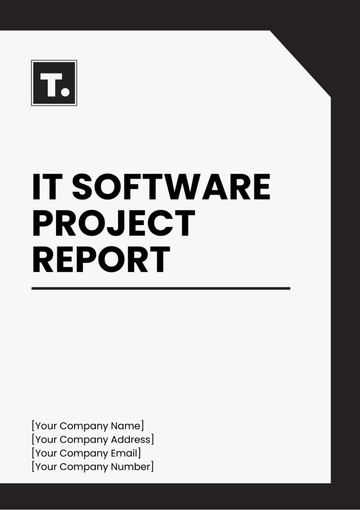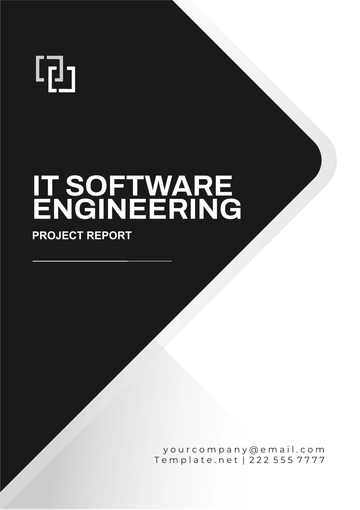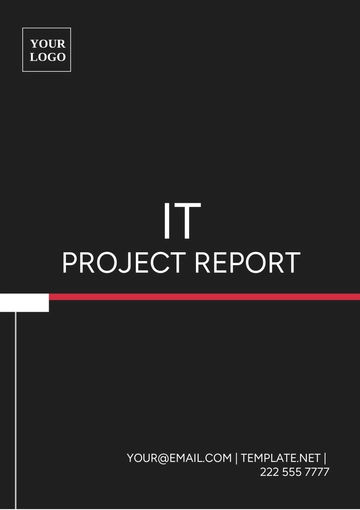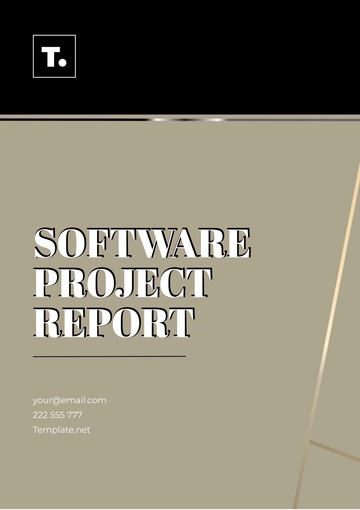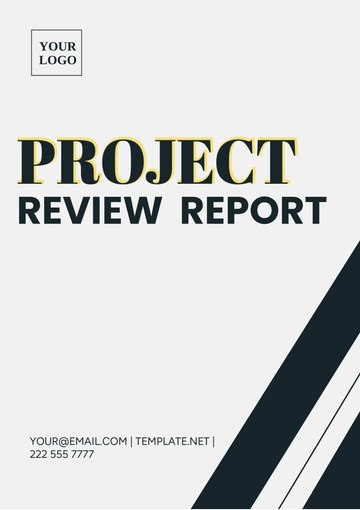Free Car Rental Project Report
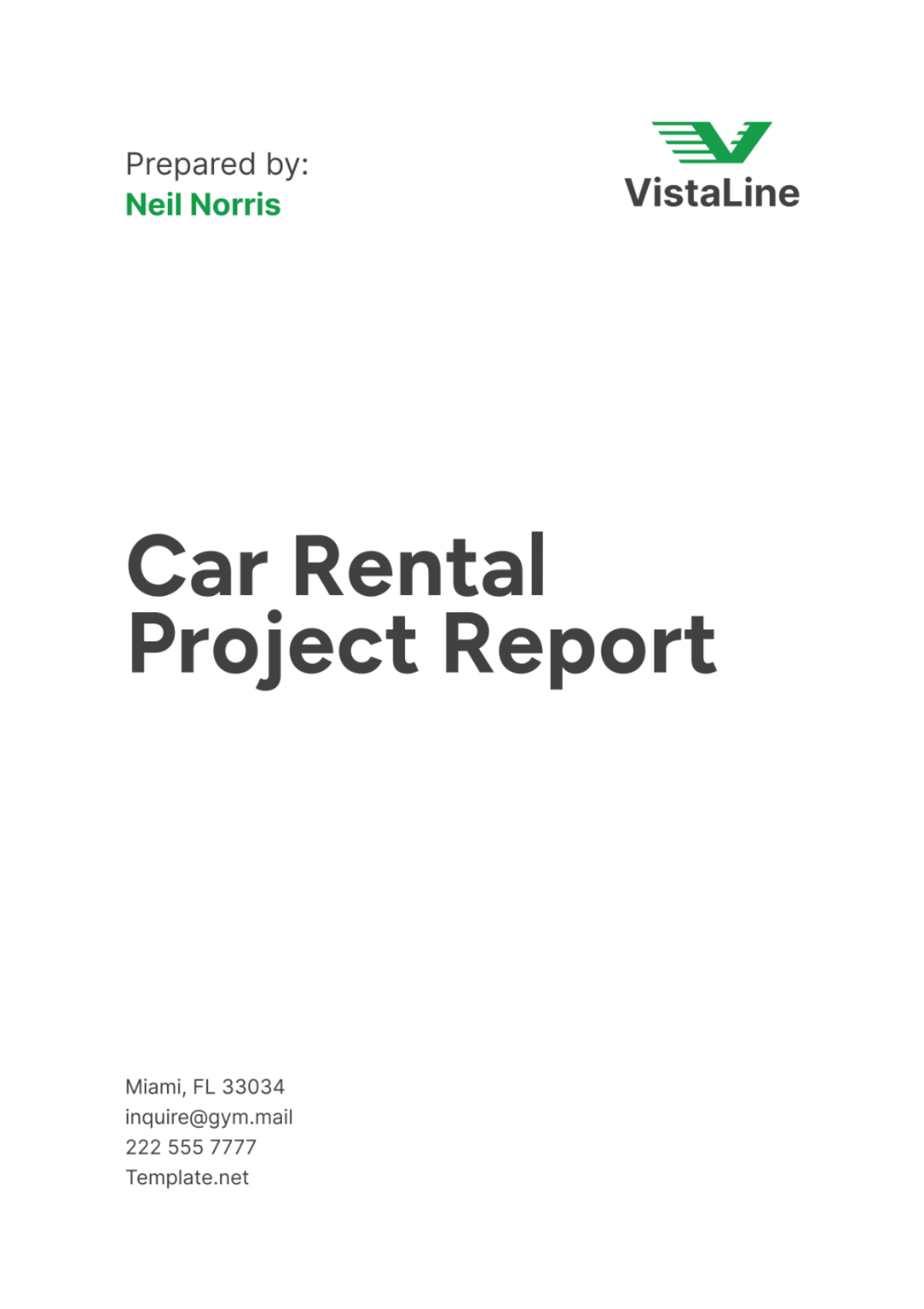
Date: [Insert Date]
Executive Summary
This Car Rental Project Report provides a comprehensive analysis of the current state and future potential of [Your Company Name]'s car rental services. The report covers market analysis, operational performance, financial review, customer feedback, and strategic recommendations for enhancing the company's competitive edge. Our goal is to ensure that [Your Company Name] continues to deliver top-notch services while expanding its market presence.
1. Introduction
The car rental industry is a dynamic and competitive sector that requires continuous adaptation to market trends and customer preferences. This report aims to provide an in-depth analysis of [Your Company Name]'s car rental operations, identify areas for improvement, and outline strategies for sustainable growth.
2. Market Analysis
Understanding the market landscape is essential for positioning [Your Company Name] strategically. This chapter provides an overview of the car rental industry, evaluates the competitive landscape, and identifies market opportunities for growth.
2.1 Industry Overview
The car rental industry has shown significant growth over the past decade, driven by increased travel and tourism, urbanization, and the rise of app-based rental services. Key players in the industry are continuously evolving their services to meet customer demands for convenience, affordability, and quality.
2.2 Competitive Landscape
[Your Company Name] operates in a highly competitive market. Major competitors include established rental companies and emerging app-based platforms. Our unique selling points include a diverse fleet of vehicles, competitive pricing, and exceptional customer service. However, continuous innovation and market awareness are crucial for maintaining our competitive edge.
2.3 Market Opportunities
Expansion into New Markets: There is potential for expanding our services into underserved regions.
Partnerships with Travel Agencies: Collaborations can boost our customer base.
Technological Advancements: Investing in app development and digital platforms to enhance customer experience.
3. Operational Performance
Efficient operations are the backbone of a successful car rental company. This chapter evaluates [Your Company Name]'s current fleet management practices, maintenance schedules, and overall operational efficiency.
3.1 Fleet Management
Current Fleet Composition:
Vehicle Type | Number of Vehicles | Average Age (Years) | Utilization Rate (%) |
|---|---|---|---|
Economy Cars | 50 | 2 | 85 |
Luxury Cars | 20 | 1 | 75 |
SUVs | 30 | 1.5 | 80 |
Vans | 15 | 3 | 70 |
Total | 115 | - | 77.5 |
Key Insights into Fleet Management
Effective fleet management is crucial for the success of [Your Company Name]'s car rental operations. The analysis of our current fleet composition and utilization provides valuable insights into customer preferences, market demands, and operational efficiency. Below are the key insights derived from our fleet management data, expanded to provide a comprehensive understanding of each aspect.
Economy Car Segment
High Utilization Rate:
The economy car segment in our fleet shows the highest utilization rate at 85%. This indicates a strong and consistent demand for these vehicles among our customers. Several factors contribute to this high utilization:
Affordability: Economy cars offer the most affordable rental rates, making them an attractive option for cost-conscious customers. This segment appeals to a wide range of customers, including budget travelers, students, and small businesses needing short-term rentals.
Fuel Efficiency: Economy cars are known for their fuel efficiency, which further reduces the overall cost of rental for the customer. In an era where fuel prices can be volatile, the economical fuel consumption of these vehicles is a significant selling point.
Versatility: These cars are versatile and suitable for various purposes, such as city driving, short trips, and daily commutes. Their compact size makes them easy to maneuver and park, which is especially beneficial in urban areas with heavy traffic and limited parking spaces.
Customer Preferences: Many customers prefer economy cars for their simplicity and reliability. They are often seen as practical choices for both short-term and long-term rentals.
Given the high demand for economy cars, it is crucial to maintain a sufficient number of these vehicles in our fleet. Regularly updating the fleet with new models and ensuring high maintenance standards will keep the utilization rate high and customer satisfaction levels elevated.
Luxury Car Segment
Significant Market Presence Despite Lower Numbers:
While luxury cars constitute a smaller portion of our fleet, they represent a significant market due to their higher rental rates. The utilization rate for luxury cars stands at 75%, which is impressive given their premium pricing. This segment attracts a specific clientele who value comfort, prestige, and advanced features.
High Rental Rates: Luxury cars command higher rental rates, contributing substantially to our revenue despite their lower utilization compared to economy cars. Customers renting luxury vehicles are often willing to pay a premium for superior quality and features.
Target Audience: The target audience for luxury cars includes business executives, tourists seeking a lavish experience, and individuals renting for special occasions like weddings and anniversaries. These customers prioritize quality and are often less sensitive to price.
Brand Image and Perception: Offering luxury cars enhances our brand image, positioning [Your Company Name] as a provider of premium rental services. This can attract a higher-end clientele and differentiate us from competitors who may not offer such vehicles.
Customer Loyalty: Customers who rent luxury cars often become repeat clients due to the exceptional experience they receive. Providing top-notch service and maintaining the vehicles in excellent condition is essential to retaining these high-value customers.
To capitalize on this segment, we should consider expanding the variety of luxury cars available, including the latest models with cutting-edge features. Marketing efforts targeted at affluent customers and businesses can further boost the utilization rate and revenue from this segment.
Fleet Age and Maintenance
Relatively Low Average Age of Fleet:
The average age of our fleet is relatively low, which has several positive implications for our operations and customer satisfaction.
Customer Satisfaction: A newer fleet means that customers are more likely to receive vehicles that are in excellent condition, both aesthetically and mechanically. Newer cars offer better performance, advanced safety features, and enhanced comfort, all of which contribute to a superior rental experience.
Reduced Maintenance Costs: Newer vehicles typically require less maintenance and are less prone to breakdowns. This reduces the overall maintenance costs and minimizes downtime, ensuring that our cars are available for rental more frequently.
Safety and Reliability: The latest vehicle models come equipped with advanced safety features, which enhance the overall safety of our customers. Reliability is also higher in newer vehicles, reducing the likelihood of on-road issues and improving customer confidence in our service.
Regulatory Compliance: Keeping our fleet updated ensures compliance with evolving regulatory standards related to emissions, safety, and fuel efficiency. This is particularly important as regulations become stricter over time.
Brand Perception: A modern fleet enhances our brand perception, portraying [Your Company Name] as a forward-thinking and customer-centric company. Customers are more likely to choose a rental service that offers the latest models over one with older, potentially outdated vehicles.
To maintain these benefits, it is crucial to have a strategic plan for fleet renewal. This involves regularly phasing out older vehicles and replacing them with new models. Additionally, leveraging data analytics to predict and schedule maintenance can further optimize our fleet operations, ensuring high availability and reliability.
The insights from our fleet management analysis underscore the importance of maintaining a balanced and well-managed fleet. By focusing on high-demand segments like economy cars, leveraging the premium market for luxury cars, and ensuring our fleet remains modern and well-maintained, [Your Company Name] can continue to deliver exceptional service and achieve sustainable growth. Investing in these areas will not only enhance customer satisfaction but also drive operational efficiency and profitability.
3.2 Maintenance and Repairs
Maintenance Schedule Compliance:
Vehicle Type | Scheduled Maintenance (%) | Unscheduled Repairs (%) |
|---|---|---|
Economy Cars | 95 | 5 |
Luxury Cars | 90 | 10 |
SUVs | 92 | 8 |
Vans | 88 | 12 |
Our maintenance team ensures that the majority of vehicles undergo scheduled maintenance, reducing the likelihood of breakdowns and enhancing customer reliability.
4. Financial Review
Financial health is crucial for the sustainability and growth of any business. This chapter provides an analysis of [Your Company Name]'s revenue, costs, and key financial metrics.
4.1 Revenue Analysis
Revenue by Vehicle Type (Annual):
Vehicle Type | Revenue ($) | Percentage of Total Revenue (%) |
|---|---|---|
Economy Cars | 500,000 | 40 |
Luxury Cars | 300,000 | 24 |
SUVs | 250,000 | 20 |
Vans | 200,000 | 16 |
Total | 1,250,000 | 100 |
4.2 Cost Analysis
Cost Breakdown (Annual):
Expense Type | Cost ($) | Percentage of Total Cost (%) |
|---|---|---|
Fleet Acquisition | 400,000 | 32 |
Maintenance | 200,000 | 16 |
Insurance | 150,000 | 12 |
Employee Salaries | 300,000 | 24 |
Marketing | 100,000 | 8 |
Miscellaneous | 100,000 | 8 |
Total | 1,250,000 | 100 |
Key Financial Metrics:
Net Profit Margin: 15%
Return on Investment (ROI): 20%
Customer Acquisition Cost (CAC): $50
5. Customer Feedback
Customer feedback is vital for understanding the strengths and weaknesses of our services. This chapter summarizes the results of recent customer satisfaction surveys and highlights key areas for improvement.
5.1 Survey Results
We conducted a customer satisfaction survey to gauge the performance of our services. The survey covered various aspects, including vehicle quality, customer service, and overall rental experience. The rating scale used in the survey is as follows:
Rating Scale:
1 - Very Dissatisfied
2 - Dissatisfied
3 - Neutral
4 - Satisfied
5 - Very Satisfied
Survey Results:
Parameter | Satisfaction Score (Out of 5) |
|---|---|
Vehicle Quality | 4.5 |
Customer Service | 4.7 |
Booking Process | 4.6 |
Pickup/Return Process | 4.4 |
Overall Experience | 4.6 |
Key Insights:
Vehicle Quality (4.5/5): Customers generally find our vehicles to be of high quality, with positive feedback on the condition, cleanliness, and reliability of the cars.
Customer Service (4.7/5): Our customer service received the highest rating, indicating that our staff's professionalism, friendliness, and helpfulness are highly appreciated by customers.
Booking Process (4.6/5): The booking process is smooth and user-friendly, but there may still be room for minor improvements to make it even more efficient.
Pickup/Return Process (4.4/5): While still rated positively, the pickup and return process has slightly lower scores, suggesting that streamlining these processes could enhance overall satisfaction.
Overall Experience (4.6/5): The overall customer experience is highly rated, reflecting general satisfaction with our services, although continuous efforts to address specific feedback will help maintain and improve these ratings.
5.2 Customer Testimonials
Positive Feedback:
"The vehicle was in excellent condition, and the booking process was seamless. Will definitely rent again!"
"Customer service was top-notch. The staff was friendly and helpful."
Areas for Improvement:
"The return process took longer than expected. It would be great if it could be streamlined."
"A bit more variety in the luxury car segment would be appreciated."
6. Strategic Recommendations
Strategic recommendations are based on our analysis of the current market conditions and operational performance. This chapter outlines key strategies to enhance [Your Company Name]'s competitive position and operational efficiency.
6.1 Enhance Digital Presence
Investing in a robust digital platform can streamline the booking process, improve customer engagement, and provide a competitive edge. Features such as mobile app booking, real-time vehicle tracking, and automated customer service can significantly enhance user experience.
6.2 Expand Fleet Variety
Based on customer feedback, increasing the variety in our luxury and SUV segments can attract a broader customer base. This can be achieved by acquiring newer models and offering unique options such as electric vehicles.
6.3 Optimize Maintenance Operations
Improving our maintenance operations can reduce unscheduled repairs and enhance vehicle reliability. Implementing predictive maintenance technology can help identify potential issues before they become major problems, thereby reducing downtime and maintenance costs.
6.4 Strengthen Customer Service Training
While our customer service is highly rated, continuous training can ensure our staff remains knowledgeable and friendly. This includes regular workshops on customer interaction, problem-solving, and handling difficult situations.
6.5 Increase Marketing Efforts
Targeted marketing campaigns can help increase brand awareness and attract new customers. Utilizing social media, search engine optimization (SEO), and partnerships with travel agencies can drive more traffic to our services.
7. Implementation Plan
An effective implementation plan is crucial for turning strategic recommendations into reality. This chapter outlines the timeline and budget allocation for the proposed initiatives.
7.1 Timeline
Task | Start Date | End Date | Responsible Team |
|---|---|---|---|
Digital Platform Development | [Start Date] | [End Date] | IT and Marketing |
Fleet Expansion | [Start Date] | [End Date] | Procurement |
Maintenance Optimization | [Start Date] | [End Date] | Operations |
Customer Service Training | [Start Date] | [End Date] | HR and Customer Service |
Marketing Campaign Launch | [Start Date] | [End Date] | Marketing |
7.2 Budget Allocation
Expense Type | Budget ($) | Percentage of Total Budget (%) |
|---|---|---|
Digital Platform Development | 100,000 | 20 |
Fleet Expansion | 200,000 | 40 |
Maintenance Optimization | 50,000 | 10 |
Customer Service Training | 50,000 | 10 |
Marketing Campaign | 100,000 | 20 |
Total | 500,000 | 100 |
8. Conclusion
This Car Rental Project Report highlights the strengths and areas for improvement within [Your Company Name]'s operations. By focusing on market opportunities, enhancing our digital presence, expanding our fleet, optimizing maintenance, and strengthening customer service, we can ensure sustained growth and customer satisfaction. Implementing the strategic recommendations outlined in this report will position [Your Company Name] as a leader in the car rental industry, poised for future success.
For any questions or further information, please contact:
[Your Name]
[Your Email]
[Your Company Name]
[Your Company Email]
[Your Company Address]
[Your Company Number]
This document serves as a comprehensive guide for all stakeholders, ensuring transparency and strategic alignment in every aspect of our car rental operations.
- 100% Customizable, free editor
- Access 1 Million+ Templates, photo’s & graphics
- Download or share as a template
- Click and replace photos, graphics, text, backgrounds
- Resize, crop, AI write & more
- Access advanced editor
Delve into detailed analysis with the Car Rental Project Report Template from Template.net. Crafted for precision, this template allows you to document every aspect of your project from inception to completion. Make it uniquely yours by using our AI editor tool to edit and customize the template, ensuring all your reporting is accurate and comprehensive.
You may also like
- Sales Report
- Daily Report
- Project Report
- Business Report
- Weekly Report
- Incident Report
- Annual Report
- Report Layout
- Report Design
- Progress Report
- Marketing Report
- Company Report
- Monthly Report
- Audit Report
- Status Report
- School Report
- Reports Hr
- Management Report
- Project Status Report
- Handover Report
- Health And Safety Report
- Restaurant Report
- Construction Report
- Research Report
- Evaluation Report
- Investigation Report
- Employee Report
- Advertising Report
- Weekly Status Report
- Project Management Report
- Finance Report
- Service Report
- Technical Report
- Meeting Report
- Quarterly Report
- Inspection Report
- Medical Report
- Test Report
- Summary Report
- Inventory Report
- Valuation Report
- Operations Report
- Payroll Report
- Training Report
- Job Report
- Case Report
- Performance Report
- Board Report
- Internal Audit Report
- Student Report
- Monthly Management Report
- Small Business Report
- Accident Report
- Call Center Report
- Activity Report
- IT and Software Report
- Internship Report
- Visit Report
- Product Report
- Book Report
- Property Report
- Recruitment Report
- University Report
- Event Report
- SEO Report
- Conference Report
- Narrative Report
- Nursing Home Report
- Preschool Report
- Call Report
- Customer Report
- Employee Incident Report
- Accomplishment Report
- Social Media Report
- Work From Home Report
- Security Report
- Damage Report
- Quality Report
- Internal Report
- Nurse Report
- Real Estate Report
- Hotel Report
- Equipment Report
- Credit Report
- Field Report
- Non Profit Report
- Maintenance Report
- News Report
- Survey Report
- Executive Report
- Law Firm Report
- Advertising Agency Report
- Interior Design Report
- Travel Agency Report
- Stock Report
- Salon Report
- Bug Report
- Workplace Report
- Action Report
- Investor Report
- Cleaning Services Report
- Consulting Report
- Freelancer Report
- Site Visit Report
- Trip Report
- Classroom Observation Report
- Vehicle Report
- Final Report
- Software Report
